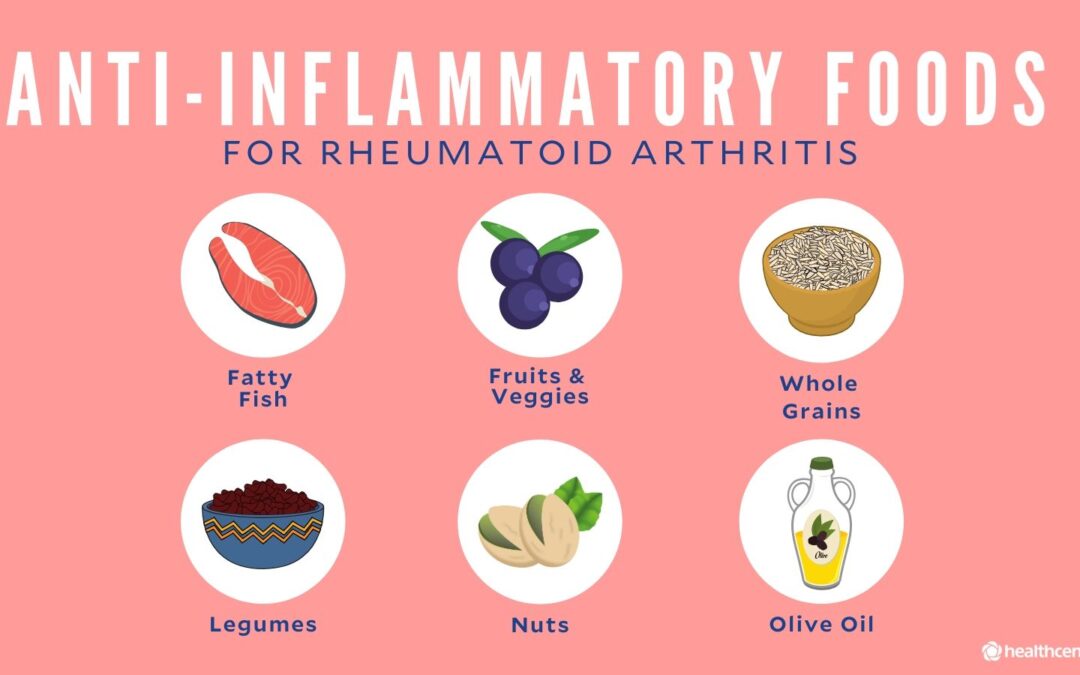
Aim to eat a healthy diet with:
- Lots of whole grains, vegetables, and fruits. They should make up two-thirds of your plate.
- Low-fat dairy and lean proteins, which should make up one-third
- Small amounts of saturated and trans fats
- A little sugar
- Limited alcohol
Before you try one, it’s a good idea to discuss it with your doctor, especially if it calls for large doses of supplements or cuts out entire food groups.
Instead of getting fixated on fasting or finding the perfect foods, be sensible about eating. Don’t make huge changes to your diet. Don’t skip meals. Eat three healthy meals and a couple of small snacks a day.
They also lower inflammation and cut down on “bad” LDL cholesterol and triglycerides. High levels of LDL cholesterol and triglycerides (fats in the blood) put you at risk for heart disease. Since RA makes heart disease more likely, you want to take every opportunity to keep your heart healthy.
Foods to Eat With RA
Beans
They’re packed with fiber, which can help lower your levels of C-reactive protein (CRP), a sign of inflammation. Beans also give you protein to keep the muscles around your joints strong. Red, kidney, and pinto beans are good sources of things like folic acid, magnesium, iron, zinc, and potassium, all of which can give your heart and immune system a boost.
Brocolli
Along with other green leafy veggies like spinach, Brussels sprouts, kale, Swiss chard, and bok choy, it’s full of vitamins like A, C, and K, which protect you from free radical damage. They’re also a great source of calcium, which keeps your bones strong.
Cherries
Chemicals called anthocyanins are powerful antioxidants that help hold down inflammation. They also give cherries their bright color. You can find them in other purple and red fruits, too, like raspberries and blueberries.
Citrus fruits
Oranges, grapefruits, and limes are great sources of vitamin C, which leads to a strong immune system that can help hold off inflammatory diseases like RA.
Fish
Nuts
Don’t like fish? Walnuts, canola oil, and soybeans are rich in a different type of omega-3 fatty acid. Or ask your doctor about supplements.
Ginger
Gingerol compounds, which give this root its flavor, also seem to be an anti-inflammatory. Studies in animals look promising, but scientists need to do more work on people before we’re sure.
Green tea
This tasty drink offers polyphenols, which are antioxidants that may lower inflammation and slow cartilage destruction. It also has epigallocatechin-3 (EGCG), which stops production of molecules that lead to RA joint damage.
Olive oil
A natural chemical in olive oil stops the production of the chemicals that cause inflammation. Nonsteroidal anti-inflammatory drugs (NSAIDs) lower inflammation by curbing the production of these same chemicals. Olive oil is also better for your heart than other cooking oils. Choose extra-virgin olive oil. It comes from the first pressing of the olive and has the most good-for-you nutrients.
Soy
It’s a source of omega-3 fatty acids that doesn’t taste fishy. Soybeans — think tofu or edamame — are a good option. They’re also packed with fiber and protein.
Turmeric
This yellow spice is a star ingredient in many Indian dishes. Curcumin is the compound in it that holds promise as an anti-inflammatory. It may work better to prevent swelling and pain than to treat it once it happens. But more work needs to be done to figure out just how much it helps.
Whole grains
When you eat more whole grains instead of processed ones (think brown rice instead of white), you may lower CRP levels. Whole-wheat pasta and breads also have antioxidants. Some people with rheumatoid arthritis have lower levels of selenium in their blood. Another advantage of eating whole grains is that their fiber fills you up, which makes it easier to manage your appetite. That can help you stay at a healthy weight so you don’t have extra pressure on your joints.
Should You Take Supplements?
RA makes you more likely to have low levels of vitamins B6, B12, C, D, and E, and magnesium, selenium, and zinc. Ask your doctor if you might need more of these from foods or supplements.
If you take methotrexate, your doctor may recommend folic acid supplements. They can help prevent side effects.
Foods to Avoid With RA
Red meat and dairy
They’re our main sources of saturated fats, which can cause inflammation in fat tissue. Other sources include full-fat dairy products, pasta dishes, and grain-based desserts.
Corn oil
The culprit here is omega-6 fatty acids. You want to cut down on them while you’re going for more omega-3s. They can lead to weight gain and joint inflammation if you overdo it. Sunflower, safflower, soy, and vegetable oils are also sources.
Fried food, fast food, and processed foods
They’re the major source of trans fats, which are created when hydrogen is added to vegetable oil to extend shelf life. They can trigger inflammation throughout your body. Plus, they raise bad cholesterol and lower the good type.

